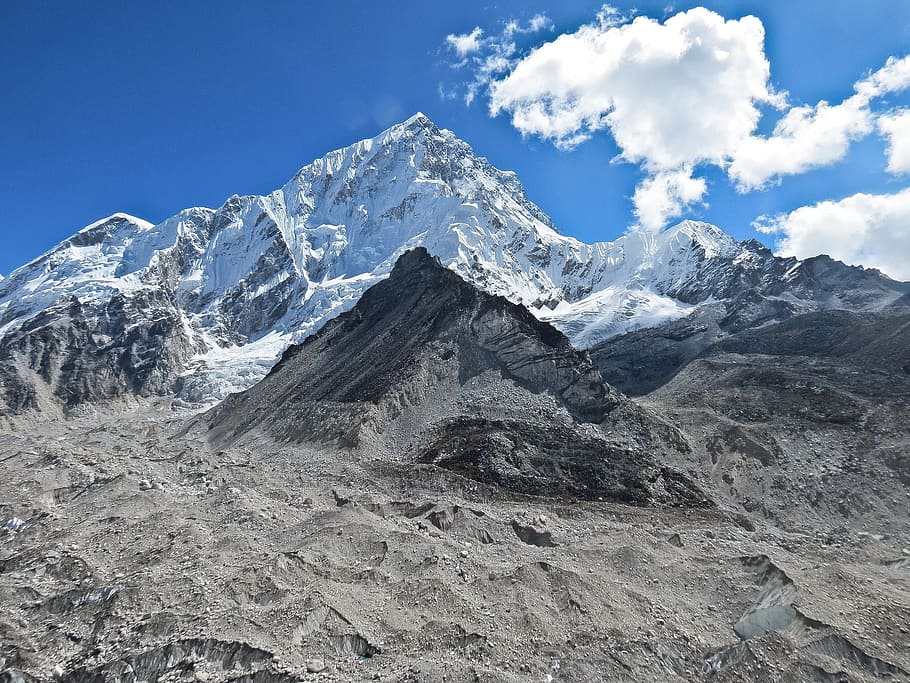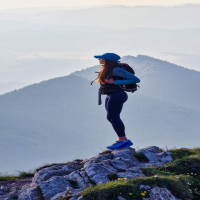Everest Base Camp Trek Kala Patthar Trek 13 Days – Ultimate Guide

Strong 8k brings an ultra-HD IPTV experience to your living room and your pocket.
The Everest Base Camp Trek Kala Patthar Trek 13 Days is one of the most iconic and sought-after adventures in the world. Nestled in the heart of the Khumbu region of Nepal, this trek takes adventurers deep into the high Himalayas, providing breathtaking views, cultural encounters, and a sense of accomplishment that is unmatched. Whether you are an experienced trekker or someone with a passion for high-altitude exploration, this 13-day itinerary offers a compact yet immersive journey into the shadow of Mount Everest.
In this comprehensive guide, we explore everything you need to know about the Everest Base Camp Trek combined with the Kala Patthar climb in 13 days — including highlights, route details, itinerary, acclimatization tips, travel preparation, and more.
Why Choose the Everest Base Camp Trek Kala Patthar Trek 13 Days?
The Everest Base Camp (EBC) trek on its own is a bucket-list experience. When combined with a hike to Kala Patthar — one of the best viewpoints in the Everest region — the experience becomes even more rewarding.
The 13-day itinerary is specially curated to balance proper acclimatization with efficient travel. It is ideal for trekkers who have limited time but still want to experience the full essence of the Everest region. This trek includes scenic flights to and from Lukla, culturally rich stops at Sherpa villages like Namche Bazaar and Tengboche, and panoramic views of some of the highest peaks on earth.
Highlights of the Everest Base Camp Kala Patthar Trek
• Scenic flight from Kathmandu to Lukla with views of the Himalayas
• Acclimatization in the Sherpa capital of Namche Bazaar
• Visiting the famous Tengboche Monastery, the spiritual hub of the Khumbu
• Standing at Everest Base Camp (5,364m), the gateway to the world's highest mountain
• Climbing Kala Patthar (5,545m) at sunrise for spectacular views of Mount Everest, Lhotse, and Nuptse
• Experiencing traditional Sherpa culture, food, and hospitality
• Trekking through Sagarmatha National Park, a UNESCO World Heritage Site
Detailed 13-Day Itinerary
Day 1: Arrival in Kathmandu (1,400m)
Upon arrival in Kathmandu, trekkers are welcomed and transferred to their hotel. The day is used for briefing, gear checks, and final preparations. Some might take the opportunity to explore Thamel or visit historical sites.
Overnight: Kathmandu
Activity: Briefing, equipment check, rest
Day 2: Flight to Lukla (2,860m) and Trek to Phakding (2,610m)
A short but scenic flight takes trekkers to Lukla, the gateway to Everest. From here, a gentle downhill trek leads to Phakding through lush pine forests and along the Dudh Koshi River.
Trek Duration: 3–4 hours
Overnight: Phakding
Day 3: Trek to Namche Bazaar (3,440m)
The trail continues north, crossing several suspension bridges. After Monjo, the route enters Sagarmatha National Park. The climb to Namche Bazaar is steep but rewarding, offering the first glimpse of Mount Everest on clear days.
Trek Duration: 5–6 hours
Overnight: Namche Bazaar
Day 4: Acclimatization Day in Namche Bazaar
Acclimatization is critical at this altitude. Trekkers spend the day exploring Namche, visiting the Everest View Hotel or hiking to Khumjung village. The goal is to gain altitude and descend back to sleep.
Activity: Acclimatization hikes, local sightseeing
Overnight: Namche Bazaar
Day 5: Trek to Tengboche (3,860m)
The trail continues with moderate ascents and descents, offering excellent views of Ama Dablam and other peaks. After crossing the Dudh Koshi River at Phunki Tenga, a steep climb leads to Tengboche Monastery.
Trek Duration: 5–6 hours
Overnight: Tengboche
Day 6: Trek to Dingboche (4,410m)
Today’s trail descends through forest and crosses the Imja River before gradually ascending to the alpine village of Dingboche. The landscape changes as trees give way to shrubs and rock-strewn terrain.
Trek Duration: 5–6 hours
Overnight: Dingboche
Day 7: Acclimatization Day in Dingboche
Another important acclimatization day. Trekkers often hike up Nangkartshang Peak (5,083m) for panoramic views and to adapt to the thinner air.
Activity: Day hike and rest
Overnight: Dingboche
Day 8: Trek to Lobuche (4,910m)
The trail ascends steadily through alpine meadows and glacial moraines. The memorials at Thukla Pass honor climbers who lost their lives on Everest. After paying respects, the trail continues to Lobuche.
Trek Duration: 4–5 hours
Overnight: Lobuche
Day 9: Trek to Everest Base Camp (5,364m) and Return to Gorak Shep (5,164m)
An early morning start leads to Gorak Shep. After a brief rest, trekkers head to Everest Base Camp. While climbing Everest is not part of this trek, reaching base camp is a huge accomplishment.
Trek Duration: 7–8 hours
Overnight: Gorak Shep
Day 10: Hike to Kala Patthar (5,545m) and Trek to Pheriche (4,240m)
Before sunrise, trekkers ascend Kala Patthar, the highest point of the trek. The panoramic view includes Everest, Nuptse, Pumori, and Lhotse. After soaking in the views, the descent to Pheriche begins.
Trek Duration: 6–7 hours
Overnight: Pheriche
Day 11: Trek to Namche Bazaar
Descending further, the trail passes through Pangboche and Tengboche. The air gets thicker, and the warmth and greenery return. By evening, trekkers are back in Namche Bazaar.
Trek Duration: 6–7 hours
Overnight: Namche Bazaar
Day 12: Trek to Lukla
The final trekking day follows the Dudh Koshi River back to Lukla. It is a time for reflection, celebration, and gratitude for completing the trek safely.
Trek Duration: 6–7 hours
Overnight: Lukla
Day 13: Fly Back to Kathmandu
A morning flight takes trekkers back to Kathmandu. The rest of the day is free for relaxation, shopping, or cultural exploration. A farewell dinner is often included.
Overnight: Kathmandu
Activity: Rest or sightseeing
Best Time to Trek
The Everest Base Camp Trek Kala Patthar Trek 13 Days is best undertaken during the pre-monsoon (March to May) and post-monsoon (September to November) seasons. During these months, the skies are clear, temperatures are moderate, and trails are in good condition. Winter treks are possible but come with harsher conditions, while the summer monsoon brings heavy rainfall and cloud cover.
Acclimatization and Altitude Sickness
Due to the high elevations involved, proper acclimatization is essential. This itinerary includes two acclimatization days and gradual ascents to minimize the risk of Acute Mountain Sickness (AMS). Trekkers should stay hydrated, avoid alcohol, and report any symptoms such as headache, nausea, or dizziness to their guide.
Physical Fitness and Preparation
While no technical climbing is involved, the trek demands good cardiovascular fitness and endurance. It is advisable to prepare with regular hiking, stair climbing, and cardio workouts at least 8–12 weeks before departure.
Essential training includes:
• Long-distance walking with a backpack
• Strength training for legs and core
• Cardiovascular conditioning such as running or cycling
• Practice hikes at altitude if possible
Packing List and Gear
Here are some essentials to bring for the Everest Base Camp Kala Patthar Trek:
Clothing:
• Thermal base layers
• Fleece or down jacket
• Waterproof and windproof shell
• Trekking pants and shorts
• Gloves, hat, and neck gaiter
• Warm socks and trekking boots
Gear:
• Sleeping bag (rated to -15°C or lower)
• Daypack (25–35 liters)
• Trekking poles
• Headlamp with spare batteries
• Sunglasses and sunscreen
• Water bottles and purification tablets
Miscellaneous:
• First aid kit and personal medications
• Snacks and energy bars
• Passport and permits (TIMS card, Sagarmatha National Park permit)
• Camera or smartphone for photos
Cost and Inclusions
The cost of the Everest Base Camp Trek Kala Patthar Trek 13 Days typically ranges from USD 1,200 to USD 2,000, depending on the level of service, group size, and inclusions.
Most packages include:
• Domestic flights (Kathmandu–Lukla–Kathmandu)
• Accommodation in teahouses and Kathmandu hotel
• All meals during the trek
• Trekking permits
• Experienced guide and porters
• Ground transportation
• Emergency support and evacuation arrangements (if insured)
Travel Insurance
Comprehensive travel insurance is mandatory. It should cover high-altitude trekking, medical emergencies, evacuation by helicopter, and trip cancellation. Be sure to check the policy for coverage above 5,000 meters.
Responsible Trekking and Local Support
Supporting local communities is crucial when trekking in the Everest region. Choose local guides, respect local customs, and minimize plastic waste by using reusable water bottles. Respecting porters and their working conditions is also an ethical priority.
Final Thoughts
The Everest Base Camp Trek Kala Patthar Trek 13 Days offers the ultimate Himalayan adventure in a well-paced and immersive experience. With stunning landscapes, cultural richness, and the sense of standing at the foot of the world’s tallest mountain, this trek is more than a physical journey — it is a spiritual and emotional one as well.
Whether you are seeking challenge, beauty, or cultural connection, this 13-day trek delivers all. Proper preparation, acclimatization, and responsible trekking will ensure a safe and unforgettable adventure.
Frequently Asked Questions
1. How difficult is the Everest Base Camp Trek Kala Patthar Trek 13 Days?
Moderate to challenging. Requires good fitness and determination, but no technical climbing skills.
2. Can beginners do this trek?
Yes, with proper preparation and a guided itinerary, beginners in good health can successfully complete it.
3. What kind of accommodation is available?
Tea houses along the trail offer basic lodging with shared or private rooms. Kathmandu hotels are typically 3-star or higher.
4. Is there internet or electricity on the trek?
Most villages have Wi-Fi (for a fee), and charging is available, although it may be limited. Bring a power bank.
5. What is the temperature during the trek?
Daytime temperatures range from 5°C to 20°C; nighttime temperatures can drop to -10°C or lower at higher altitudes.
Note: IndiBlogHub features both user-submitted and editorial content. We do not verify third-party contributions. Read our Disclaimer and Privacy Policyfor details.


